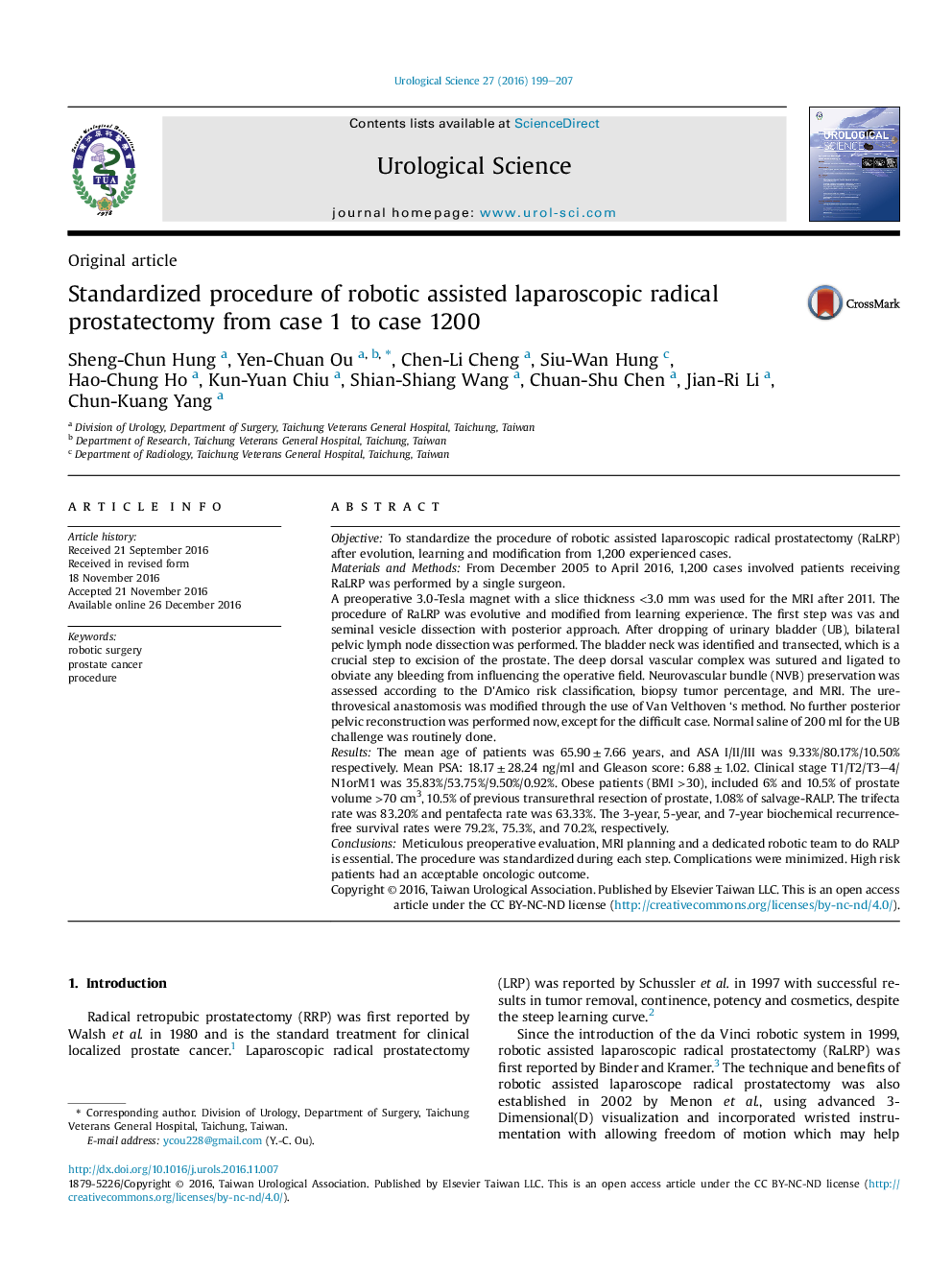| کد مقاله | کد نشریه | سال انتشار | مقاله انگلیسی | نسخه تمام متن |
|---|---|---|---|---|
| 5730625 | 1411721 | 2016 | 9 صفحه PDF | دانلود رایگان |
ObjectiveTo standardize the procedure of robotic assisted laparoscopic radical prostatectomy (RaLRP) after evolution, learning and modification from 1,200 experienced cases.Materials and MethodsFrom December 2005 to April 2016, 1,200 cases involved patients receiving RaLRP was performed by a single surgeon.A preoperative 3.0-Tesla magnet with a slice thickness <3.0 mm was used for the MRI after 2011. The procedure of RaLRP was evolutive and modified from learning experience. The first step was vas and seminal vesicle dissection with posterior approach. After dropping of urinary bladder (UB), bilateral pelvic lymph node dissection was performed. The bladder neck was identified and transected, which is a crucial step to excision of the prostate. The deep dorsal vascular complex was sutured and ligated to obviate any bleeding from influencing the operative field. Neurovascular bundle (NVB) preservation was assessed according to the D'Amico risk classification, biopsy tumor percentage, and MRI. The urethrovesical anastomosis was modified through the use of Van Velthoven 's method. No further posterior pelvic reconstruction was performed now, except for the difficult case. Normal saline of 200 ml for the UB challenge was routinely done.ResultsThe mean age of patients was 65.90 ± 7.66 years, and ASA I/II/III was 9.33%/80.17%/10.50% respectively. Mean PSA: 18.17 ± 28.24 ng/ml and Gleason score: 6.88 ± 1.02. Clinical stage T1/T2/T3-4/N1orM1 was 35.83%/53.75%/9.50%/0.92%. Obese patients (BMI >30), included 6% and 10.5% of prostate volume >70 cm3, 10.5% of previous transurethral resection of prostate, 1.08% of salvage-RALP. The trifecta rate was 83.20% and pentafecta rate was 63.33%. The 3-year, 5-year, and 7-year biochemical recurrence-free survival rates were 79.2%, 75.3%, and 70.2%, respectively.ConclusionsMeticulous preoperative evaluation, MRI planning and a dedicated robotic team to do RALP is essential. The procedure was standardized during each step. Complications were minimized. High risk patients had an acceptable oncologic outcome.
Journal: Urological Science - Volume 27, Issue 4, December 2016, Pages 199-207
